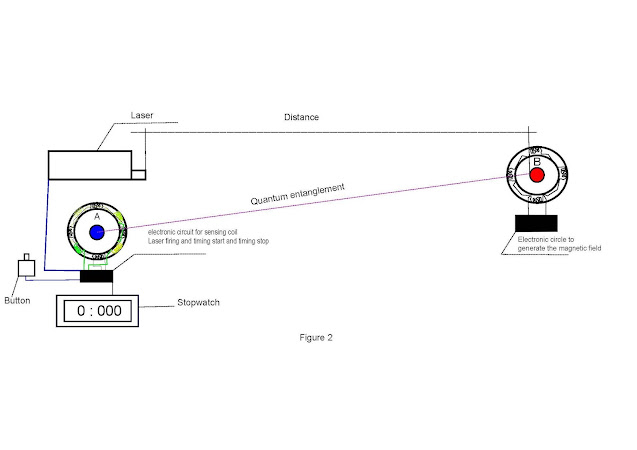Published on December 4, 2020
Trying to quantify the speed of light in
only one direction seems to be a serious problem that we must clarify. To
confirm that light maintains the same speed in one direction and another, I
think I have found a system that will allow us to make such a measurement.
On the one hand we have two particles
A ( electron, photon , etc.) and B ( electron,
photon , etc.) quantum entangled, at one end the particle A
inside a suspended magnetic field, generated by a coil that
creates said field, next to this there is a sensor coil ,
where no current flows. (Figure 1)
The sensor coil will allow us to verify if
the particle changes in its inertia or spin, inducing a current in it. If
the inertia changes, the current generated in the sensor coil will pass to an
electronic circuit which will stop the timer clock counting. (Figure 1)
At the other end we have the second
particle B. This is also in suspension by a magnetic field, generated
by a coil that surrounds it and an electronic circuit that circulates
an electric current over it. (Figure 2)
We also have a laser, which will send a burst of light to particle B when you press a pushbutton connected to the laser drive controller circuit and to another circuit that will start the clock count. In other words, the push-button will start the light shot and start the clock. (Figure 3)
When the
laser collides with particle B it will cause a change in inertia or spin, which
will be transmitted instantaneously to particle A. This will excite the sensing
coil of A and stop the timer. (Figure 4) This action is
instantaneous, allowing the speed of light to be measured with great precision.
Taking the measured distance
between the tip of the laser and the particle B divide
it by the time and have the speed of light in one direction.
This is it for now!!




Comentarios
Publicar un comentario
Gracias por comentar !!!
Thanks for commenting!